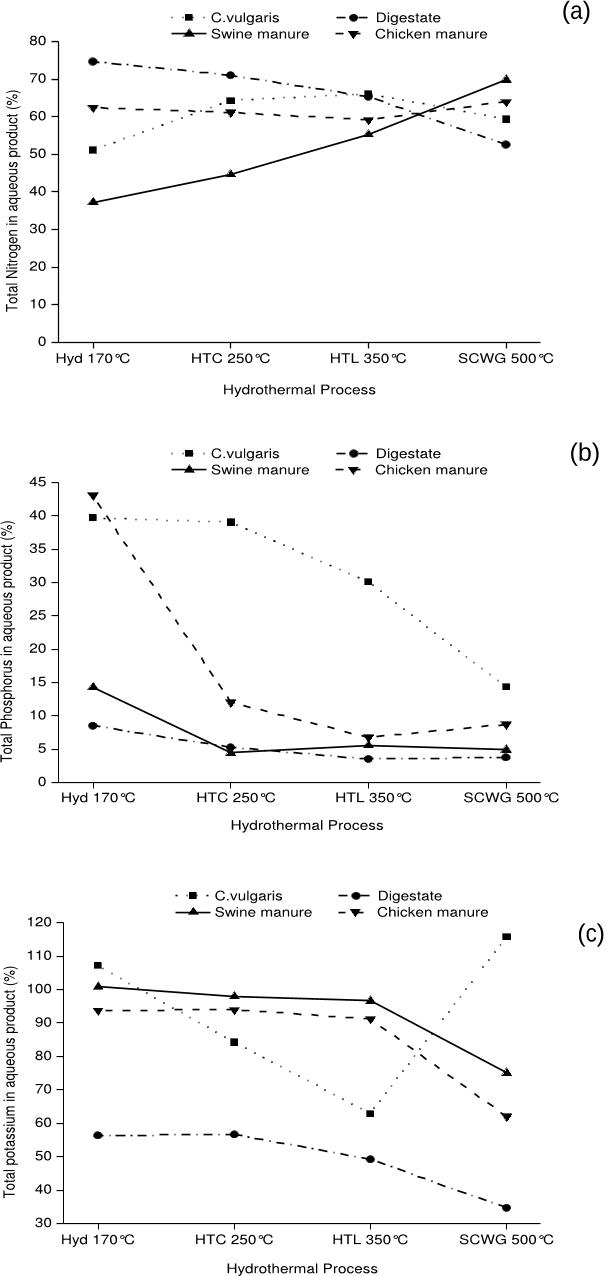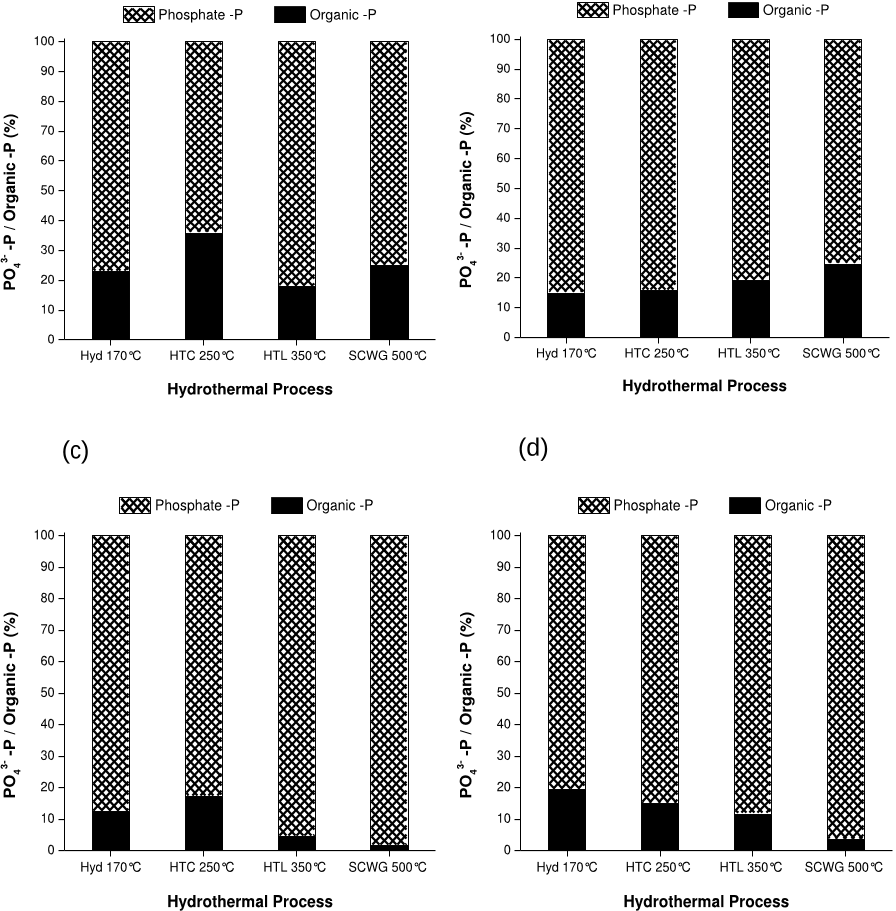Abstract: We converted the marine microalga Nannochloropsis sp. into a crude bio-oil product and a gaseous product via hydrothermal processing from 200 to 500 °C and a batch holding time of 60 min. A moderate temperature of 350 °C led to the highest bio-oil yield of 43 wt %. We estimate the heating value of the bio-oil to be about 39 MJ kg−1, which is comparable to that of a petroleum crude oil. The H/C and O/C ratios for the bio-oil decreased from 1.73 and 0.12, respectively, for the 200 °C product to 1.04 and 0.05, respectively, for the 500 °C product. Major bio-oil constituents include phenol and its alkylated derivatives, heterocyclic N-containing compounds, long-chain fatty acids, alkanes and alkenes, and derivatives of phytol and cholesterol. CO2 was always the most abundant gas product. H2 was the second most abundant gas at all temperatures other than 500 °C, where its yield was surpassed by that of CH4. The activation energies for gas formation suggest the presence of gas-forming reactions other than steam...








